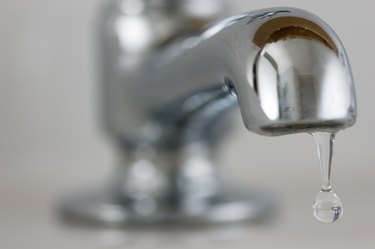Just how do you really feel with regards to Low Water Pressure in the House??

Low water pressure in your house can be an irritating trouble, influencing every little thing from bathing to cleaning dishes. If you're experiencing weak water circulation, there are numerous possible causes and remedies to check out. In this guide, we'll go over typical factors for low water stress and practical steps to resolve the concern successfully.
Introduction to Low Tide Pressure
Low tide pressure occurs when the circulation of water from your taps, showers, and other components is weak than typical. This can make everyday jobs extra difficult and much less reliable. Comprehending the root causes of low water stress is vital to discovering the best remedy.
Common Root Causes Of Low Water Stress
Pipeline Obstructions
Over time, pipelines can end up being blocked with mineral deposits, debris, or debris, restricting the circulation of water. This is an usual concern in older homes with galvanized steel pipes.
Deterioration
Corrosion within pipes can result in leaks and reduced water pressure. Rust buildup can constrict water circulation, particularly in aging plumbing systems.
Faulty Stress Regulatory Authorities
Stress regulatory authorities are in charge of preserving constant water stress in your house. If they malfunction, it can cause low tide pressure or irregular circulation throughout the house.
Local Supply Of Water Issues
Occasionally, the trouble exists outside your home. Community water system problems, such as main line leaks or upkeep work, can briefly minimize water stress in your area.
Exactly How to Detect Low Tide Pressure
Inspecting Taps and Components
Beginning by examining the water pressure at various faucets and components throughout your home. If the problem is isolated to certain areas, it might suggest local troubles.
Examining Pipes
Examine visible pipes for signs of leakages, corrosion, or blockages. Pay attention to any kind of uncommon audios, such as banging or rattling pipelines, which might indicate problems within the plumbing system.
Consulting with a Plumber
If you're not able to determine the cause of low water stress, think about hiring an expert plumber to perform a comprehensive assessment. They can identify underlying issues and advise appropriate remedies.
DIY Solutions to Repair Low Tide Pressure
Cleansing Aerators and Showerheads
Mineral deposits can gather in aerators and showerheads, lowering water flow. Remove and clean these components routinely to improve water stress.
Flushing Hot Water Heater
Sediment accumulation in the water heater can limit circulation and lower performance. Flushing the storage tank regularly aids get rid of debris and keep optimum efficiency.
Inspecting Pressure Regulator
Ensure that the stress regulator is working properly. Changing or changing the regulatory authority can aid recover correct water pressure throughout your home.
Clearing Clogs in Pipes
For small clogs, try making use of a plumbing serpent or chemical drain cleaner to clear blockages in pipes. Beware when utilizing chemicals and comply with safety and security guidelines.
When to Call a Professional Plumber
If do it yourself initiatives stop working to resolve the concern or if you think considerable plumbing problems, it's ideal to look for support from a certified plumber. They have the expertise and tools to deal with intricate problems safely and successfully.
Safety Nets to Keep Water Pressure
Routine Upkeep
Arrange routine maintenance for your plumbing system to avoid problems such as deterioration, leaks, and blockages. Resolving small issues early can aid prevent even more considerable fixings later on.
Installing a Pressure Booster
Think about installing a pressure booster pump to boost water pressure in locations with constantly reduced circulation. This can be particularly helpful for multi-story homes or residential properties with high-demand components.
Monitoring Water Use
Bear in mind water usage behaviors and avoid overtaxing the plumbing system. Basic changes, such as shocking showers and washing lots, can assist keep sufficient water pressure.
Conclusion
Managing low water pressure can be discouraging, yet identifying the underlying causes and implementing suitable solutions can bring back optimal circulation throughout your home. Whether it's cleansing aerators, checking pipes, or speaking with a plumber, taking aggressive actions can make sure a consistent supply of water for your daily requirements.
FOUR WAYS TO FIX LOW WATER PRESSURE NOW
Turning on a shower or faucet only to find the water comes out in a sad, slow drizzle is never a good feeling. How exactly are you supposed to wash a pan or take a quick shower when it takes 10 minutes just to rinse off a little soap? The good news is that when your water pressure is bad, there's always a cause: typically one that can be easily fixed. Here are some of the most common causes of low pressure and what you can do to fix the issue:
DEBRIS AND MINERAL DEPOSIT BUILDUPS
If you notice low water pressure from just one or two of the fixtures in your house, the problem likely has to do with debris buildup. Water is full of minerals and other debris, all of which can accumulate in your pipes and on your fixtures. This can cause a blockage that affects how much water flows through. To fix this, try filling a small plastic bag with white vinegar, and use a rubber band to hang it around your showerhead or faucet. Let the head of the fixture soak for a few hours, and the vinegar should loosen the deposits.
WATER LEAKS
Leaks are another common cause of low water pressure. If water is flowing out of your plumbing through a hole or crack before it can reach your fixture, the pressure coming out of the faucet or showerhead will be lower. A plumbing professional is your best bet for finding and repairing a leak in your water supply pipes.
Leaks are another common cause of low water pressure. If water is flowing out of your plumbing through a hole or crack before it can reach your fixture, the pressure coming out of the faucet or showerhead will be lower. A plumbing professional is your best bet for finding and repairing a leak in your water supply pipes.
FOUR WAYS TO FIX LOW WATER PRESSURE NOW
Turning on a shower or faucet only to find the water comes out in a sad, slow drizzle is never a good feeling. How exactly are you supposed to wash a pan or take a quick shower when it takes 10 minutes just to rinse off a little soap? The good news is that when your water pressure is bad, there's always a cause: typically one that can be easily fixed. Here are some of the most common causes of low pressure and what you can do to fix the issue:
DEBRIS AND MINERAL DEPOSIT BUILDUPS
If you notice low water pressure from just one or two of the fixtures in your house, the problem likely has to do with debris buildup. Water is full of minerals and other debris, all of which can accumulate in your pipes and on your fixtures. This can cause a blockage that affects how much water flows through. To fix this, try filling a small plastic bag with white vinegar, and use a rubber band to hang it around your showerhead or faucet. Let the head of the fixture soak for a few hours, and the vinegar should loosen the deposits.
WATER LEAKS
Leaks are another common cause of low water pressure. If water is flowing out of your plumbing through a hole or crack before it can reach your fixture, the pressure coming out of the faucet or showerhead will be lower. A plumbing professional is your best bet for finding and repairing a leak in your water supply pipes.
Leaks are another common cause of low water pressure. If water is flowing out of your plumbing through a hole or crack before it can reach your fixture, the pressure coming out of the faucet or showerhead will be lower. A plumbing professional is your best bet for finding and repairing a leak in your water supply pipes.
A VALVE ISSUE
If you have low water pressure throughout your home, check your main shut-off valve to make sure it's completely open. You may also want to see if there's a pressure-reducing valve installed. If there is, have a plumber help you adjust the settings to get the pressure you're looking for.
OTHERS USING WATER
Believe it or not, your low water pressure could be caused by your neighbors. If you notice low pressure at certain times of day, it may be because you and the people living next to you have similar schedules - when everyone is showering at the same time, the pressure will be lower in every home. Low pressure throughout the neighborhood may also be caused by an issue with your municipal water supply. If that's the case, call the supplier to see if they're working on the issue.
https://www.rotorooter.com/blog/water-leaking/low-water-pressure-fixes/

Do you like reading up on Low Water Pressure in the House?? Put a remark directly below. We will be happy to listen to your suggestions about this blog post. In hopes to see you back again before long. Enjoyed our write-up? Please quickly share it. Let somebody else discover it. Thanks for your time. Kindly pay a visit to our site back soon.
Book An Estimate Now